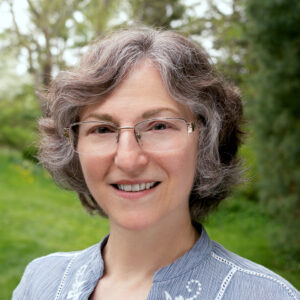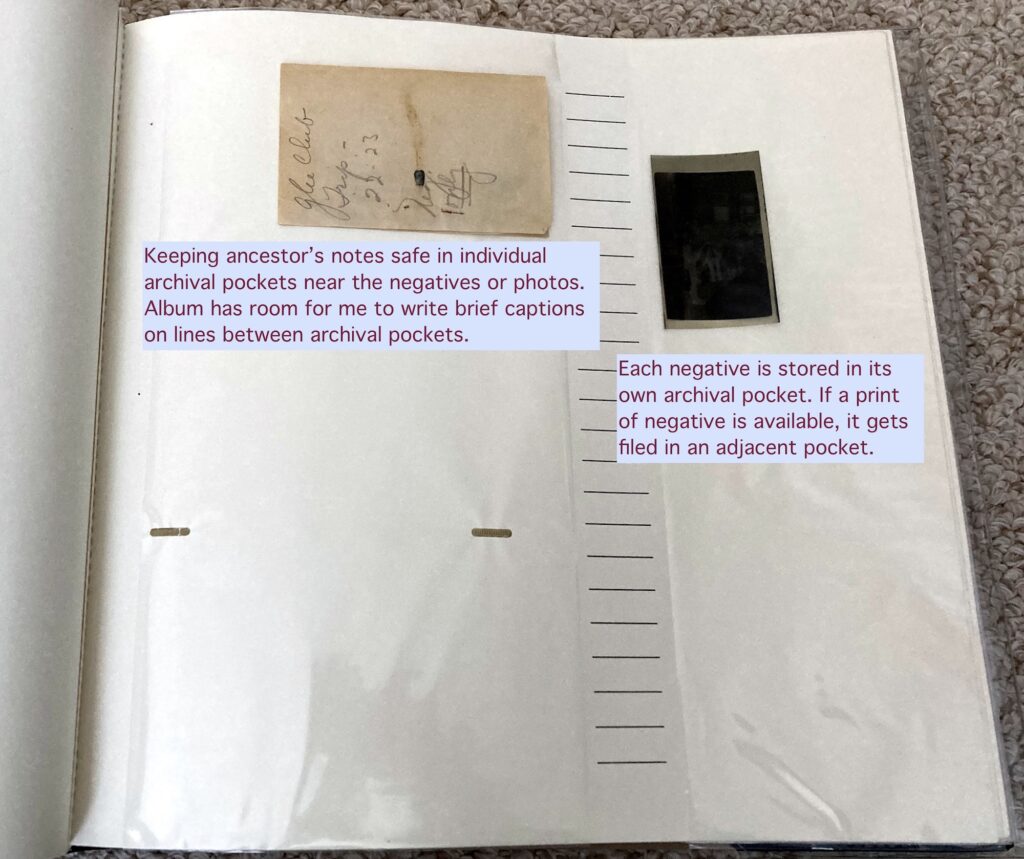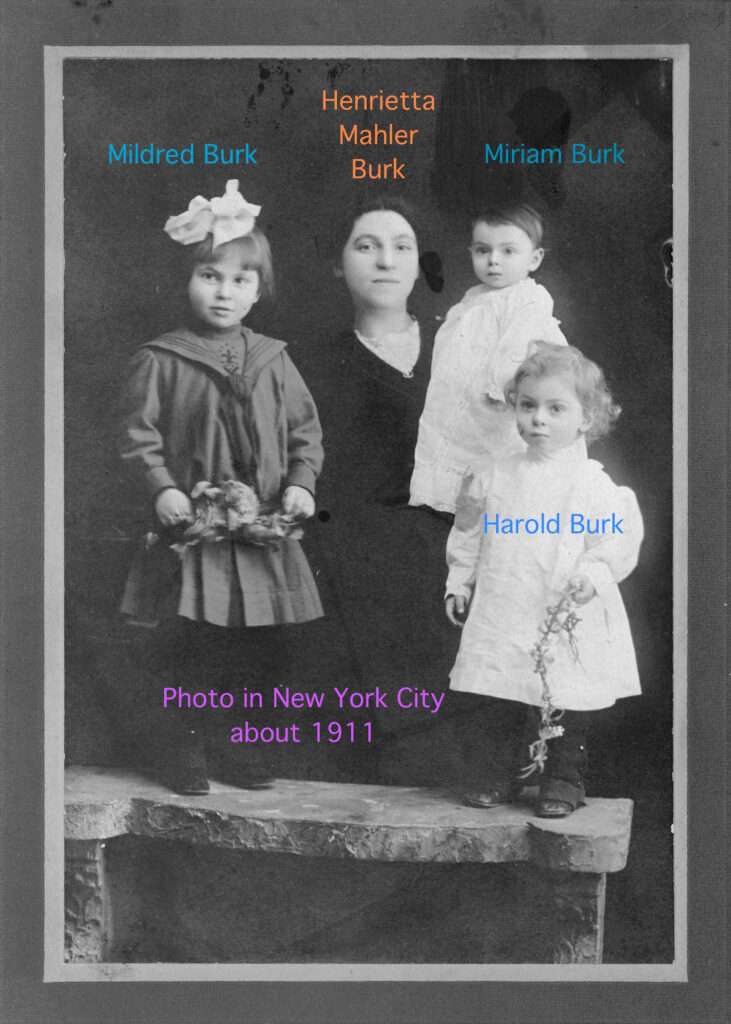I’m so happy to present a new How They Do It interview! This one is with speaker, blogger and author Marian Burk Wood. Marian is the author of the best-selling genealogy book, Planning a Future for Your Family’s Past and the blog, Climbing My Family Tree. A Bronx native transplanted to New England, she holds an MBA from Long Island University in New York and a BA from the City University of New York. Marian’s special interest is helping people to preserve, share, and perpetuate family history. In this interview, Marian shines a light on how she organizes her family photos, which date back more than a century!
 How They Do It: Marian Burk Wood
How They Do It: Marian Burk Wood
How long have you been doing genealogy?
My family history journey began in 1998, when the genealogist on my mother’s side asked about my father’s parents. I knew almost nothing about those ancestors. Little by little, I learned how to do research, and soon I was hooked, especially when my search led me to long-lost cousins.
What’s your favorite thing about being a genealogist?
Cousin connections! Although both of my parents had many first and second cousins, I met only a few when I was young, and never even knew the names of others. That’s why I jump for joy when I connect with a cousin and we have the opportunity to get acquainted, reminisce, and share family stories.
What’s your biggest challenge when it comes to organizing your genealogy/family photos?
My late father-in-law was a photo buff from an early age, snapping and developing his own photos from 1917 on. It’s a challenge to organize and safely store these photos because they vary in size and shape, and a number are already deteriorated. Some negatives were stored in envelopes or paper wrappers, interleaved with prints, while others were in paper wrappers marked “not printed.” I’ve scanned and inverted most of the negatives to try and identify the people and places. It’s important to my family’s history to safeguard these century-old photos and negatives, plus the original handwritten notes.
I’m experimenting with putting photos, negatives, and notes in an archival photo album, rather than the archival sleeves and boxes I currently use. Here you see one of the handwritten notes with one unprinted negative from 1922-1923:
After scanning, the negative(s) and the note go into the archival album, with space for written captions. For the next batch, I’m going to use archival photo pages in binders so I can easily rearrange the pages:
What is your favorite technology tool for genealogy/family photos?
My trusty Canon CanoScan 8400F does a dandy job of scanning photos and slides that I import into different photo applications for fine-tuning. In particular, I like Vivid-Pix for restoring faded, cracked, and torn digital images.
If you were starting out new as a genealogist what would you do differently?
If I could go back in time, I would carefully cite my sources and write down the provenance of old photos and captions, if not obvious. Back in the day, I was so excited about each discovery that I barely stopped to note my sources. I didn’t have the experience to know that in the future, I would want to retrace my steps and mine those sources for more details and insights.
How do you go about sharing your personal research/photos with cousins or other interested parties?
Cousins are invited to view my public family tree, posted on a variety of genealogy websites. I digitize and share old photos privately with individual cousins, asking for help identifying people. Then I digitally label each person on the photo before sharing an uncaptioned and a captioned version with cousins. For one group wedding photo, I color-coded the names I digitally put on the photo to indicate which branch of the family each person belonged to, my way of clarifying the relationships. That was a big hit with the cousins whose ancestors were in the photo. Here’s an example of a digitally captioned family photo (I use Preview on my Mac to add the captions):
For the wider world, and for cousin bait, I share finds from family history and selected photos of ancestors on my genealogy blog. The “ancestor landing pages” along the top summarize what I know about each ancestor or family and include links to individual blog posts. I also blog about research methodology and planning ahead so genealogical materials wind up in safe hands (family or non-family) later on.
Do you have a dedicated space in your home for doing genealogy research? What’s it like?
In my home office, a couple of steps from my desk and computer, I have a file cabinet just for genealogy, plus shelf space for my multitude of archival boxes and reference books. When working on a project, I temporarily store documents and photos in an archival box (or for really short term, a storage tub) so the materials are in one place. This is my alternative to piling things on my desk, where they tend to get in the way.
What’s your biggest piece of advice to genealogists in terms of organizing their research/family photos?
Think long term. We’re not just organizing for ourselves but for the sake of future generations. I love archival boxes for original documents and old photos–I have nearly 40, with surname labels–but I also recognize that archival photo albums would be easier to browse, which I want to encourage. The best organizational methods and materials are those that work for today and for tomorrow, keeping documents and photos accessible and safe. I consider my approach to organizing genealogy a work in progress. I’m always looking for fresh ideas to make my research more accessible for me and for those who come after me.
Thank you so much, Marian! I love these ideas for organizing family photos! Photo organizing can be so overwhelming for so many people (including me), so these very practical examples are much appreciated. I also appreciate your comments about our genealogical legacy. I can’t wait to read your book!




Thanks for this interview! Lots of great tips for organizing and sharing photos. What a great idea to have an album of ancestor photos that others can browse through.